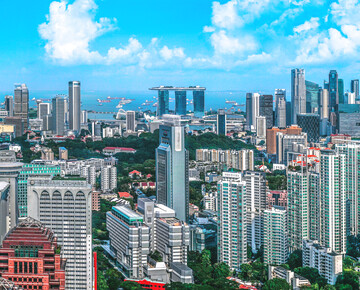Executive summary
Singapore continues to refine its tax incentive schemes for both offshore and onshore funds managed by Singapore-based fund managers – revisions in this update include, among others, a new definition and new thresholds for asset under management (“AUM”), removal of the newly-incorporated fund requirement, a new option for closed-end funds, and a new application process. The updates also introduce a streamlined application process for the incentives.
These tax incentives remain useful tools in wealth management for high-net worth individuals and their families, notably for funds managed by Singapore-based single-family offices (“SFOs”), although SFO-managed funds are subject to more stringent conditions.
Introduction
The Monetary Authority of Singapore (“MAS”) recently updated Singapore’s tax incentive schemes for funds managed by Singapore-based fund managers under Sections 13O, 13U and 13D of the Income Tax Act 1947 (“ITA”), effective 1 January 2025.
At the same time, a new Section 13OA of the ITA was introduced to extend the Section 13O scheme to Limited Partner (“LP”) funds as Section 13O is only available for Singapore companies.
Background to tax incentive schemes
Generally, Singapore levies income tax on income accruing in or derived from Singapore or received in Singapore from outside Singapore in respect of certain gains and profits. Singapore's current headline corporate income tax rate is 17%.
The Section 13O/OA, 13U and 13D tax incentives provide a tax exemption to fund vehicles managed by Singapore-based fund managers when specified conditions are met. Qualifying funds enjoying these tax incentives are exempt from Singapore income tax on all “specified income” derived by the fund in respect of “designated investments”. In practice, this covers a broad scope of income derived from a wide range of investments (with limited exceptions).
Incentivised funds also enjoy withholding tax exemption and Goods and Services Tax remission.
An application to the MAS is required to enjoy the Section 13O/OA and Section 13U tax incentives. No application is required to enjoy the Section 13D tax incentive.
Section 13O/U tax incentive changes
Revised quantitative criteria for new and existing funds (other than SFO funds)
The Section 13O tax incentive applies to Singapore-incorporated companies managed by a Singapore fund manager. The Section 13U tax incentive applies to both offshore and Singapore-based funds and covers a wider range of fund structures (including master-feeder funds, master-SPV structures, etc.).
Funds seeking to enjoy the Section 13O/U tax incentives will now need to:
- Have minimum assets under management (“AUM”) in designated investments at the end of every financial year
- S$5 million for Section 13O (previously none); and
- S$50 million for Section 13U (previously this only has to be met at the point of application);
- Be managed by a Singapore fund manager employing at least 2 investment professionals (“IPs”) (previously, funds under Section 13O were not subject to this requirement); and
- Meet tiered annual local business spending (“LBS”) requirements (ranging from S$200,000 to S$500,000 LBS depending on AUM) (previously fixed at S$200,000).
There are grace periods available for incentives commencing between 1 January 2025 and FY ending 2026, as well as grace periods for incentives commencing prior to 1 January 2025.
SFO-managed funds are subject to more stringent quantitative conditions and remain unchanged.
Other revisions
Other revisions include:
- removal of the condition that a fund must be a newly set-up company for Section 13O funds;
- removal of the requirement that the Section 13O/U fund vehicle may only serve the investment strategy that has been approved by MAS; and
- waiver of the 30/50 rule for investors of Section 13O funds which are trusts and unit trusts incentivised under the Section 13D scheme with effect from YA 2025.
The 30/50 rule prevents certain non-qualifying investors (e.g., Singapore companies) from investing in greater than a prescribed amount of issued securities of a Section 13O fund (30% or 50% depending on the number of investors in the fund), either alone or together with their associates. This prevents non-qualifying investors from being a large investor in/effectively controlling a Section 13O fund.
The MAS has clarified the 30/50 rule will not apply to trusts and unit trusts incentivised under Section 13D, effective from YA 2025.
Section 13D tax incentive changes
The Section 13D tax incentive applies to prescribed persons (that are non-resident individuals, companies or trust entities – i.e., offshore fund vehicles) managed by a Singapore fund manager.
The Singapore fund manager of a Section 13D fund now needs to employ at least one IP in each FY with effect from the FY ending in 2027 (inclusive).
New Section 13OA tax incentive for LP funds
The new Section 13OA will extend the Section 13O scheme to funds constituted as Singapore-registered LPs. All the Section 13O conditions mentioned above apply equally to Section 13OA funds at the level of the LP (i.e., no look-through) and the general partner of the Section 13OA fund will be held responsible for meeting the incentive conditions.
New options for closed-end funds
The MAS has introduced closed-end funds (funds with fixed lifespans and designated fund-raising and redemption periods) as an option for non-SFO Section 13O, 13OA and 13U applicants. For closed-end funds, certain quantitative conditions will be waived in the years during the fund’s divestment phase. The tax incentive will be revoked at the end of a fund’s divestment phase or the day immediately after its 20th incentive year, whichever is earlier.
New application process
From 2 January 2025, all new applications must be made through the new MAS Tax Scheme portal. This new single-step application process simplifies the application process and is expected to shorten processing times.
This streamlines the application process, especially for SFO-managed funds. Previously, SFO-managed funds were required to follow a lengthy application process (including submission of information and documents over several stages to the MAS via email and online portal).
Concluding thoughts
The recent tax incentive updates reflect Singapore’s ongoing commitment to the requirements of the OECD Forum on Harmful Tax Practices and the EU Code of Conduct Group by ensuring that tax incentives are only provided to funds that have anchored sufficient economic substance in Singapore, while still promoting Singapore as a regional financial hub by taking into account the practical considerations faced by funds that are / wish to avail themselves of the tax incentives available, as seen with the removal of investment strategy change restrictions, the introduction of the new Section 13OA scheme, and the closed-end fund option.
Singapore-based fund managers with existing non-SFO Section 13O/U funds may wish to revisit their investment strategies in light of the revised minimum AUM and tiered LBS requirements and consider how these requirements can be met within the grace period. Prospective non-SFO Section 13O/OA/U applicants could consider opting into a “closed-end fund” treatment, if applicable.




















